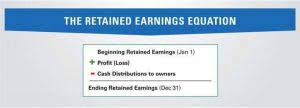
Contra revenue decreases the top-line revenue figure, which can influence gross profit margins, while operating expenses are subtracted from gross profit to determine operating income. This distinction is particularly important for stakeholders analyzing a company’s efficiency in generating revenue before accounting for the costs of running the business. Sales returns involve products returned by customers, allowances are deductions due to product issues, and discounts are reduced prices for early payment or bulk purchases.
- Whereas assets normally have positive debit balances, contra assets, though still reported along with other assets, have an opposite type of natural balance.
- In addition, you can examine the impact of sales discounts on increases in sales, to see if it makes sense to continue offering discounts in order to boost profits.
- In the realm of accounting, contra revenue plays a significant role in accurately reflecting a company’s financial performance.
- However, the fundamental principle is that the contra account is used to offset the related main account, providing a more nuanced view of the company’s financial position.
- In the realm of accounting, various techniques are used to ensure financial statements provide an accurate and comprehensive view of a company’s financial health.
- The accurate reporting of contra revenue is integral to compliance with revenue recognition standards, such as the International Financial Reporting Standards (IFRS) and Generally Accepted Accounting Principles (GAAP).
Understanding a Contra Account
You’ve just converted $20 worth of cash into $20 worth of shoes; an asset that remains in your inventory. Since you no longer have the shoes, aka the asset, you record a $20 expense on your income statement, But you also record $30 in revenue from the sale, so your net income is $10. Of course, you’ll also have contra revenue to pay your employees’ wages, your rent, your utilities and other costs. Those are expenses, too, because, without them, you wouldn’t have had a store in which to sell the shoes and collect the revenue. As mentioned, there can be a contra account for any type of transaction depending on a company’s needs.
- This refined approach is particularly beneficial when assessing the long-term value of assets and the true profitability of a company’s operations.
- If the amounts of these line items are minimal, they may be aggregated for reporting purposes into a single contra revenue line item.
- Contra accounts are unique ledger entries that offset the balance of related accounts, providing a nuanced view of a company’s financial situation.
- Whether in-house or outsourced, utilising dedicated accounting and bookkeeping teams ensures accurate recording of contra revenue.
Revenue Contra Account
By providing a clear view of the adjustments made to primary accounts, stakeholders can better understand the financial decisions and policies in place. This transparency builds trust and can influence investment decisions, credit terms, and market perception. Contra https://www.bookstime.com/ accounts are an essential component of financial statements, serving as a counterbalance to primary accounts and providing clarity on the net value of assets or revenues. They play a critical role in painting a more accurate picture of a company’s financial health.
Zeni Helps Your Record Returns, Discounts, And Allowances
Similarly, an inflated accounts receivable balance, not tempered by an allowance for doubtful accounts, could give a false sense of liquidity. The sales discounts contra revenue account records the discounts given to customers on sales made to them, normally a cash or settlement discount. The account is normally a debit balance and in use is offset against the revenue account which is normally a credit balance. Consequently the net balance of the two accounts shows the net value of the sales after discounts. Contra revenue is a type of account in financial accounting that offsets the balance of a corresponding revenue account. Contra revenue accounts have a debit balance, which is the opposite of the typical credit balance found in revenue accounts.
- Consider an asset account, where the values are listed as debits, and the account itself will present a positive total.
- When considering all of the money currently owed to your business that’s recorded in your Accounts Receivable (A/R) line item as an existing asset, there’s a good chance that not all of those customers are going to pay you back in full.
- As your business acquires new assets (e.g., machinery, office equipment, vehicles), you record the initial purchase value in your Fixed Asset account.
- By offering insights into potential losses or reductions in asset values, contra accounts contribute to transparent and responsible financial reporting.
- Please continue reading to delve into the details of contra-revenue accounts and the appropriate entries for them.
- Generally speaking, the use of contra accounts is to ensure their related accounts stay clean and to keep track of historical cost easier.
- Instead, they are deducted directly from the revenue at the time of sale, resulting in a lower recorded sale amount.
Suppose Company A extends a two percent discount on the total amount for payments made within a week, deviating from the standard 30-day term. The company records the discounted portion in its contra account under Sales Discounts in this scenario. The contra revenue account reflects the original amount, the discounted sale, and the resulting net sales for the company. Accountants use contra accounts rather than reduce the value of the original account directly to keep financial accounting records clean.
Sales Discounts Account
- As can be seen using the two accounts, allows information about the original sale to be maintained on the revenue account, and details of the sale returns to be maintained on the sales returns contra revenue account.
- They differ from discounts and allowances, as they are typically provided post-purchase.
- It is especially important to track sales returns separately and on a trend line, since this can provide important evidence of problems with a company’s products that are causing customers to return goods.
- You can also record contra revenue within the sales account, but this means that it will be buried within the total amount of revenue reported, so that management cannot easily determine the amount of contra revenue.
- In summary, the contra revenue account plays a crucial role in bookkeeping by mitigating unforeseen losses and clearly understanding a business’s financial landscape.
What is contra revenue, and how does it differ from gross and net revenue?


